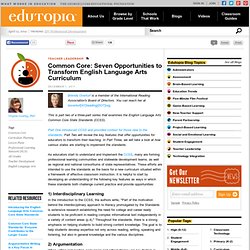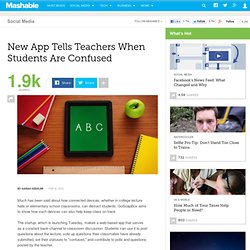

Fair Use Checklist. Introduction to the Checklist The Fair Use Checklist and variations on it have been widely used for many years to help educators, librarians, lawyers, and many other users of copyrighted works determine whether their activities are within the limits of fair use under U.S. copyright law (Section 107 of the U.S.

Copyright Act). Fair use is determined by a balanced application of four factors set forth in the statute: (1) the purpose of the use; (2) the nature of the work used; (3) the amount and substantiality of the work used; and (4) the effect of the use upon the potential market for or value of the work used. College vs. career a false choice for students.
May 07, 2012|By Lawrence M.

Rivitz In 2002, a handful of technology powerhouses — Apple, Microsoft, SAP — realized there was a profound gap between the knowledge and skills most students learn in school and the knowledge and skills they would need to compete in typical 21st century communities and workplaces. They formed the Partnership for 21st Century Skills, which since then has published countless guides, lobbied the federal government and partnered with educational leadership in 16 states to position 21st century readiness at the center of U.S. K-12 education. What are 21st century skills? Yet, many of our schools have not made the full transition to address the 21st century workplace.
Android Tablet for Indian Schools to Cost Just $35 Per Unit. Published on: Note -- this news article is more than a year old.

By: Ian Mansfield The Indian government has launched a new low cost Android based tablet device that will be distributed to schools in the country. The device will cost the government US$49.98, but will then be subsidised to US$35 per unit. This current phase was a pilot to procure 100,000 devices. The Aakash UbiSlate 7 tablet comes with a 366 Mhz processor and 256MB of RAM along with a 2GB Flash Memory.
The screen is a 7-inch display with 800x480 pixel resolution and connectivity is Wi-Fi only. Shaping Tech for the Classroom. 21st-century schools need 21st-century technology. There Are No Technology Shortcuts to Good Education. Kentaro Toyama There are no technology shortcuts to good education. For primary and secondary schools that are underperforming or limited in resources, efforts to improve education should focus almost exclusively on better teachers and stronger administrations.
Three Essential Tips for New Online Training Designers. One of the biggest challenges online training developers have is that they often have no background in online training.

Online training is very different than face-to-face training, yet many classroom trainers inherit the online learning developer role simply because their organization has decided to begin offering online training. This is further complicated by the various reasons that many organizations venture into online training, such as scalability, cost savings, and optimized resource use. These are decisions of budget, not of learning and performance. Is it any wonder that many online learning developers are metaphorically taking the square peg of traditional classroom workshops and trying to fit it into the round hole of online training? We need to first understand the differences between online training and traditional classroom training.
Demystifying ICT4E Terminology: 10 Acronyms and Names You Should Know. Last week, amidst reading the various blogs and tweets for Open Education Week , I came across several acronyms that were unfamiliar. Terms like Edupunk and Aakash are just a few of the terms that you simply have to “be in the know” in order to know.
Anyone new to the field of information and communication technology for education (ICT4E) might be a little overwhelmed at first by the plethora of acronyms, terminology, and program and developer names that pervades internet searches and tweets. Whether you’re an education professional looking for new opportunities to use technology in a development project, or a seasoned ICT4D veteran exploring the new advances being made in open education, there’s usually a new term that pops up, sometimes coined at a recent conference, that might be unfamiliar.
So to offer some clarification, here are some ICT4E terms you should know: ICT4E: Information and Communication Technology for Education BYOD: Bring Your Own Device. 50 new tech tools you should know about. You may have dozens of apps on your phone and scores of websites bookmarked on your laptop, but that doesn't mean you have all the latest tech tools at your fingertips.

New mobile apps, services, social networks and other digital tools pop up so frequently that keeping up with them is a nearly impossible task. Common Core: Seven Opportunities to Transform English Language Arts Curriculum. Brenda Overturf is a member of the International Reading Association's Board of Directors.

You can reach her at boverturf[AT]reading[DOT]org. This is part two of a three-part series that examines the English Language Arts Common Core State Standards (CCSS). Part One introduced CCSS and provided context for those new to the standards. Part Two will review the key features that offer opportunities for educators to transform their teaching. New App Tells Teachers When Students Are Confused. Much has been said about how connected devices, whether in college lecture halls or elementary school classrooms, can distract students.

21 Things That Will Be Obsolete by 2020. What Will Education Look Like in 2020? Dan Meyer: Math class needs a makeover.